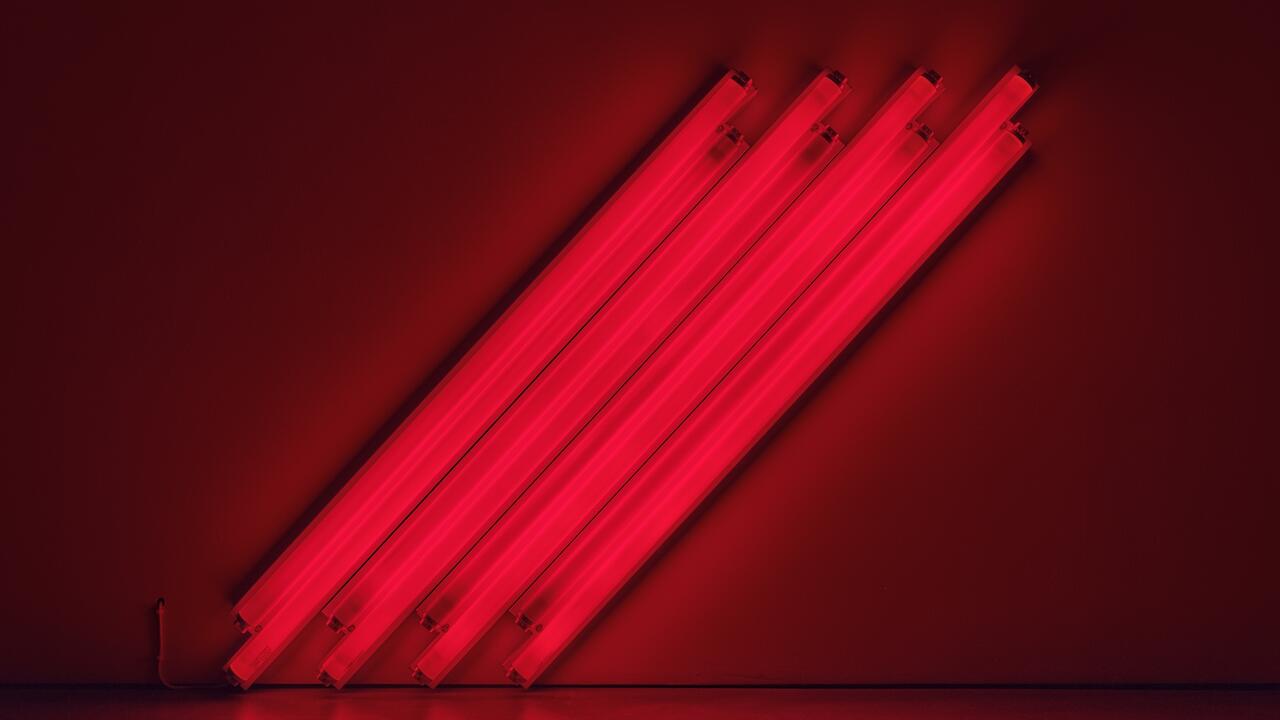Teresa Margolles
In the museum’s soaring hall children play under bubbles that come from Teresa Margolles’ piece En el aire (In the Air, 2003). Running, laughing, catching, they are fascinated by the glistening, delicate forms that float down from the ceiling and break up on their skin. A common motif in art history, the bubble has long been used as a memento mori, a reminder of the transitory nature of life. The children’s parents, meanwhile, studiously read the captions. Suddenly, with a look of disgust, they come and steer their offspring away. The moment of naive pleasure turns into one of knowing repulsion: they have learned that the water comes from the Mexico City morgue, used to wash corpses before an autopsy. It’s unimportant that the water is disinfected; the stigma of death turns the beautiful into the horrific.
This is the ploy at work in most of the pieces on display in Margolles’ first large-scale European solo show. Despite the show’s title, ‘Muerte sin fin’ (Endless Death), death itself is not directly visually displayed; it is only in the viewer’s psyche that the silent, minimal, often quite beautiful work is transformed into something appalling. In Aire (Air, 2003) the viewer simply moves through a humid room; in Llorado (Wept, 2004) water drips from the ceiling. In the former, it is the same disinfected morgue water moistening the room; in the latter, it is plain tap-water. We are appalled at the idea that we have absorbed the tincture of death. How are we, then, not appalled that the same water washes from autopsy rooms into the drains and is recycled into tap-water?
The Papeles (Papers, 2003) seem like painted abstract works; actually, these sheets of watercolour paper have been washed in the same run-off water and have absorbed blood and other organic materials, thus becoming ‘portraits’ of the dead. A type of portraiture is also attained in Catafalco (Catafalque, 1997), in which plaster-soaked sheets have been draped over corpses, creating a negative-relief cast, extending the tradition of the funeral mask to the entire body. The immediate reaction is revulsion, and to regard Margolles’ objectives as cynical. Considering the history of Western art – closely bound up with Christianity and its images of suffering and death – it seems, however, that these works fit within quite a traditional iconography. Body parts are venerated as holy relics, while ‘imprints of death’ – such as St Veronica’s veil, on which Christ’s suffering face was imprinted, and the Turin Shroud – have been glorified as proof of Jesus’ divinity and suffering; Catafalco also bears witness to, verifies and commemorates lives that might otherwise have been forgotten.
Margolles originally comes from Culiacán, a town scarred by the drug trade, a place where many people die violently and young. The poverty that drives under-age mothers to dump their new-borns in the garbage, however, is not limited to this town but is endemic to Mexico. Many families cannot afford proper burials and so the corpses get sucked into a bureaucratic system of ‘disposal’, intending to make them smoothly disappear. Not unlike President Bush hiding the coffins of US soldiers from public view, the government does not want these dead – the proof of a failed administration – to be seen, to cause an uproar. Margolles, who works only with the bodies of those that suffered a violent death, wants to rescue them from invisibility.
While post-mortem portrait photographs of babies and children were once quite common in America, the tradition survives only in Mexico and is somehow a precursor to the most moving of all the works on show. Entitled Entierro (Burial, 1999), the piece is simply a small concrete block that sits in the middle of a vast, empty room, lit by a bright beam. Within the block is the body of a stillborn child, which otherwise would have been disposed of, since the result of an intra-uterine death in Mexico is considered ‘medical waste’ – another baby in the rubbish.
The artist herself is clearly haunted by the production of these works. They are not a catharsis for the poverty and violence she witnesses; they are the production of mourning. Modern psychiatry defines normal grief as a process of emancipation from the bondage to the deceased, of readjustment to the environment in which the deceased is missing; acute grief, on the other hand, is the inability to make these adjustments. Margolles suffers from acute grief for her country. At her own avowal it would be impossible to make representative images to describe her reality; it would simply be too appalling.













